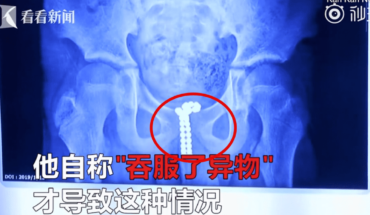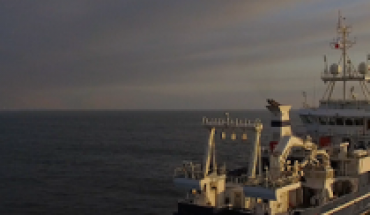Governor Alfredo Cornejo introduced a bill that will seek to finance 4 road, productive and environmental infrastructure initiatives that will contribute to the urban, productive and tourism development of Mendoza province. This is the improvement of the Corridor of provincial route 82, the Livestock Aqueduct La Paz, the double access to San Martín-Rivadavia-Junín (stage 1) and the Integral Management of Urban Solid Waste (GIRSU). During the presentation were presented the Minister of Economy, Infrastructure and Energy, Martin Kerchner; The Secretary of Environment and Land Management, Humberto Mingorance; the Minister of Government, Labour and Justice, Lisandro Nieri; the director of Environmental Protection, Miriam Skalany, and the mayors Diego Guzmán (La Paz) and Miguel Ronco (Rivadavia). Cornejo emphasized that “these are four emblematic projects, because of the importance they have for the development of the province. They have a great component of labor, of employment. Soon we will be bidding Portezuelo del Viento in the South, which will generate around 2,000 direct jobs. We are reorganizing the Vale concession to be able to restart the Colorado River Potassium project.” As for the projects being presented, the representative detailed that GIRSU would require 1,000 jobs; Route 82, more than 1,000; the aqueduct, 500, and the double via Rivadavia, San Martín and Junín, 500 jobs. In this way, Cornejo stressed that “they are initiatives that serve to mitigate employment problems, so we want to accelerate them”. On the aqueduct, he argued that “it will expand the productive livestock border. Thus, the Aqueduct La Paz is added to that of Bowen-Canalejas, which we are about to finish, and to the tender of Monte Comán-La Orqueta”. The construction of route 82 “is also strategic, not only for an area that expands tourism but also because it will allow us to increase the tourist flow for the mountainous and residential area of Luján, which has been developing in a chaotic way. This route is essential for the management of the territory and to enhance tourism and residential development,” he said. The double track will help three communes: Rivadavia, San Martín and Junín,” added Cornejo, and assured that the works will allow “to reach places where we have a high concentration and small productions that need a better exit to route 7”. Referring to the fourth project, the Governor explained that “more than one and a half million inhabitants produce garbage and need treatment to comply with a law of the 90s that was never fulfilled in Mendoza: eliminate the garbage in the open.” This project is about treating waste in a different way, so that it does not contaminate the water table and does not contaminate with gases. Private risk is incorporated by adding them up to generate the energy produced by the garbage in its decomposition naturally,” the representative valued.
Cornejo with Ministers Kerchner and Nieri and Secretary Mingorance.
Project Improvement of the Corridor of the provincial route 82-Province of MendozaThe road infrastructure is key to improving market access, production mobilization, integration of departments of the North (Las Heras), Gran Mendoza and those of the Southwest ( Luján de Cuyo) and the quality of life of the inhabitants. Currently, provincial route (RP) 82, in the section to intervene, has 2 indiviso lanes with 3.4 meter wide logs and variable width benches in poor condition. Due to its undulating topography and winding path, the RP82 in this sector does not have sections for the possibility of overpassing, so in certain hours there is vehicle congestion and the average speed of travel decreases markedly. As a result, service levels are inadequate. The large number of cyclists who use the route, who are currently driving along the road side to vehicles and trucks, is added as an inconvenience, creating risks of accidents. Therefore, the civil works included in the project include for the first section of intervention, of peri-urban location and with an extension of 8.16 km, the improvement and expansion of the existing roadway to make it an urban highway of two lanes of circulation by meaning. For the rest of the sections to intervene, with an extension of 22,288 km, the works include the improvement of the existing road making it a safe route. For all sections, the construction of cycleways and paved benches is planned. In addition, the project will improve tourist signage for the entire corridor and the service area of the town of Cacheuta with minor civil works including: Cacheuta road conditioning (600 m), Plaza Siria urban conditioning and development of two commercial modules, among others. Work will be carried out in conjunction with national and international bodies. La Paz livestock aqueductWith the aim of expanding the productive border in various areas linked to the livestock sector, the Government of Mendoza has been working on infrastructure projects a few years ago. In this context, in 2016 the formulation of several livestock aqueducts, unpublished in the province, were faced, which contribute to the development of activity in the dry area. This process included the formulation of the Bowen-Canalejas Livestock Aqueduct project, currently under way, foreseeing its completion in September. The Aqueducto Ganadero Monte Comán-La Horqueta project, coming up, with financing from the Inter-American Development Bank. The Aqueducto Ganadero La Paz project, with executive project completed, and others such as San Rosa Norte and Santa Rosa Sur, currently in formulation. With an estimated investment cost of one and 15 billion pesos, this set of projects covers an area of about 2.5 million hectares, where more than 70% of the bovine stock (355,000 head) of the province is concentrated. The La Paz Livestock Aqueduct Project is a productive infrastructure work in an area where extensive cattle farming is carried out as the main economic activity. The construction will contribute to the increase of competitiveness and sustainable development of the livestock sector in the southeastern part of La Paz.The project envisages the implementation of Community pressurized systems within the framework of livestock drying activity. It involves a technological innovation proposal that marks an unprecedented paradigm shift in the public investments of the province of Mendoza, and even in water management. The aqueduct has an area of 483 km of pipes that supply 376,400 hectares, allowing to expand the productive border to the east. The project envisages a technologically modern system of delivery on demand, through a community pressurized network, mostly gravitational, with delivery points defined in terminals (71 Community terminals, 116 delivery points). The conduction and distribution network will feature hydraulic control and control elements such as air valves, drain valves, sectioning valves and pressure regulating valves. This set of elements ensures fairness in flow distribution, protects network elements and pipes, and facilitates operation and maintenance. The Aqueducto Ganadero La Paz project is at the level of the executive project and is part of a set of projects raised by the Government of Mendoza for financing, within the framework of the credit operator Federal Regional Infrastructure Program of the Federal Regional Infrastructure Trust Fund (FFFIR). Double project via access to Rivadavia-Junín (stage I)The Provincial Road Directorate signed in 2012 an agreement with the municipalities of Junín, San Martín and Rivadavia in order to develop the dual-track project to the head cities of the three Departments. The municipalities undertook to pay a percentage of the expropriations that required the release of the trace, while the Provincial Directorate of Vialidad undertook to tender for the technical, economic and environmental studies of access from the national route 7 to Falucho street, located in Rivadavia.The complete project “Double Via Acceso a Rivadavia, Junín and San Martín” is today at the level of the executive project. Its objectives include, on the one hand, the improvement in accessibility to urban conglomerates connected by the new road facility, which translates into lower vehicle operating costs and savings in users’ travel time. It also improves road safety by impacting the accident indicators in the arteries currently used to access the three departments of the East of Mendoza. Finally, by creating basic road accessibility infrastructure, the work lays the groundwork for the establishment of industries and neighborhoods, pointing to the development of the eastern part of the province. As a positive externality, an increase in the value of the land is observed. In order to facilitate its implementation, the comprehensive project has been divided into two stages. The first stage involves an intervention of 4 km of double track by new trace between Calle Falucho and provincial route 60; with construction of three roundabouts (Falucho street, RP 60 and Belgrano street), execution of streets of side services, returns, lighting, horizontal and vertical demarcation and waterproofing of figtrees and canals that cross the route. The second stage of the work will link the RP 60 with the RN 7 by totally new trace with a length of 8 km, providing the construction of a bridge over the roads of the San Martín railway, in addition to the rest of the interventions planned for the integral project. The work provides for a 24-month implementation period and will require a labour investment of 500 personas. In this first stage, involving the Departments of Rivadavia and Junín, and in accordance with the commitments made by the municipalities regarding the release of the trace, full possession has already been taken of the area corresponding to the department of Rivadavia and the takeover in the department of Junín is being completed.The project “Double Via Access to Rivadavia-Junín” is part of a set of elevated projects for financing under the operational credit program Federal Regional Infrastructure of the Federal Regional Infrastructure Trust Fund (FFFIR). Integral Management of Urban Solid Waste (GIRSU)The objective of the Programme is to implement comprehensive urban solid waste management (RSU) systems in urban centers of more than 20,000 inhabitants from strategic intervention plans, in order to to reduce the disposal of RSU in open-pit rubbish (BCA) and increase its disposal in well-designed, constructed and operated landfills in urban centers.” The project is divided into two: one part of the funds are for the consortium made up of the three municipalities of the Uco Valley, which is called COINCE and the other part of the funds is for the ambitious project that will benefit the 7 municipalities of the Metropolitan Area , for which a consignment of US$19 million has been earmarked,” explained Environment Secretary Humberto Mingorance.The environmental area manager stressed that “the municipalities of the Uco Valley – through COINCE – have been working very well, making the arrangement of their waste in a single landfill. This financing of $100 million is so that COINCE can build two transfer and transport plants – trucks and punts – for logistics to landfill. These transfer plants will help these municipalities to greatly lower logistical costs.” The Comprehensive Urban Solid Waste Management Program (GIRSU) also includes the implementation of actions and initiatives of education, awareness and social communication, institutional strengthening, separation at source, collection, logistics and transportation, transfer, recovery, recycling and final disposal of existing BCA RSU and sanitation, aimed at promoting the comprehensive management of MSR. The implementation of the programme is the responsibility of the Secretariat of Government for Environment and Sustainable Development of the General Secretariat of the Presidency of the Nation (SAyDS), which to this end constituted a Programme Executing Unit (UEP), responsible for the management, coordination, execution, management and general administration of the program, financial-accounting management as well as its monitoring and evaluation. For the metropolitan area the Environmental Center to be built, will provide treatment and final disposal to the waste generated in the departments of Capital, Godoy Cruz, Guaymallén, Las Heras and Lavalle. The municipalities of Luján de Cuyo and Maipú will also be rejected from the Maipú Plant, where the municipalities of Luján de Cuyo and Maipú will be disposed of. The project for the metropolitan area will provide 70% of the waste generated throughout the provincial territory, preserving the environment and the water resource. The Environmental Center was designed for a lifespan of 20 years and will allow processing of around 1,500 tons per day on average. It will have a Waste Separation Plant, Composting Plant, landfill modules and coprocessing and/or power generation plant. In these final disposal modules, controlled management of the liquids that are generated will be carried out and the biogas of the waste mass will be captured for processing into electrical energy. The site selected for the environmental center site is located on a tax site of 428.47 hectares, in the department of Las Heras, District of Capdevila.The project contemplates the possibility of private investors interested in the facility of a co-processing plant and/or power generation in order to minimize burial in cells and thus make maximum use of waste, not only as raw material and be recycled but to be used from the generation of energy. The project also envisages training, through the Social Inclusion Program (PISO), workers who currently carry out collection in subhuman conditions in the various rubbish, allowing them to also carry out their tasks in the centres of Separation. Finally, the GIRSU programme provides for financing for the Remediation and Recovery of the premises that are currently being used as open-pit municipal macro-stewards for the disposal of waste in the Metropolitan Area of mendoza. The works to be carried out range from the perimeter closure, conditioning of the soil to the final xerophilic realization of them in compliance with the Law 5970 of Solid Waste, which establishes the need to eradicate all garbage in the open air and the micro-trash. In this note:
Cornejo
mendoza
Projects
Alfredo Cornejo





